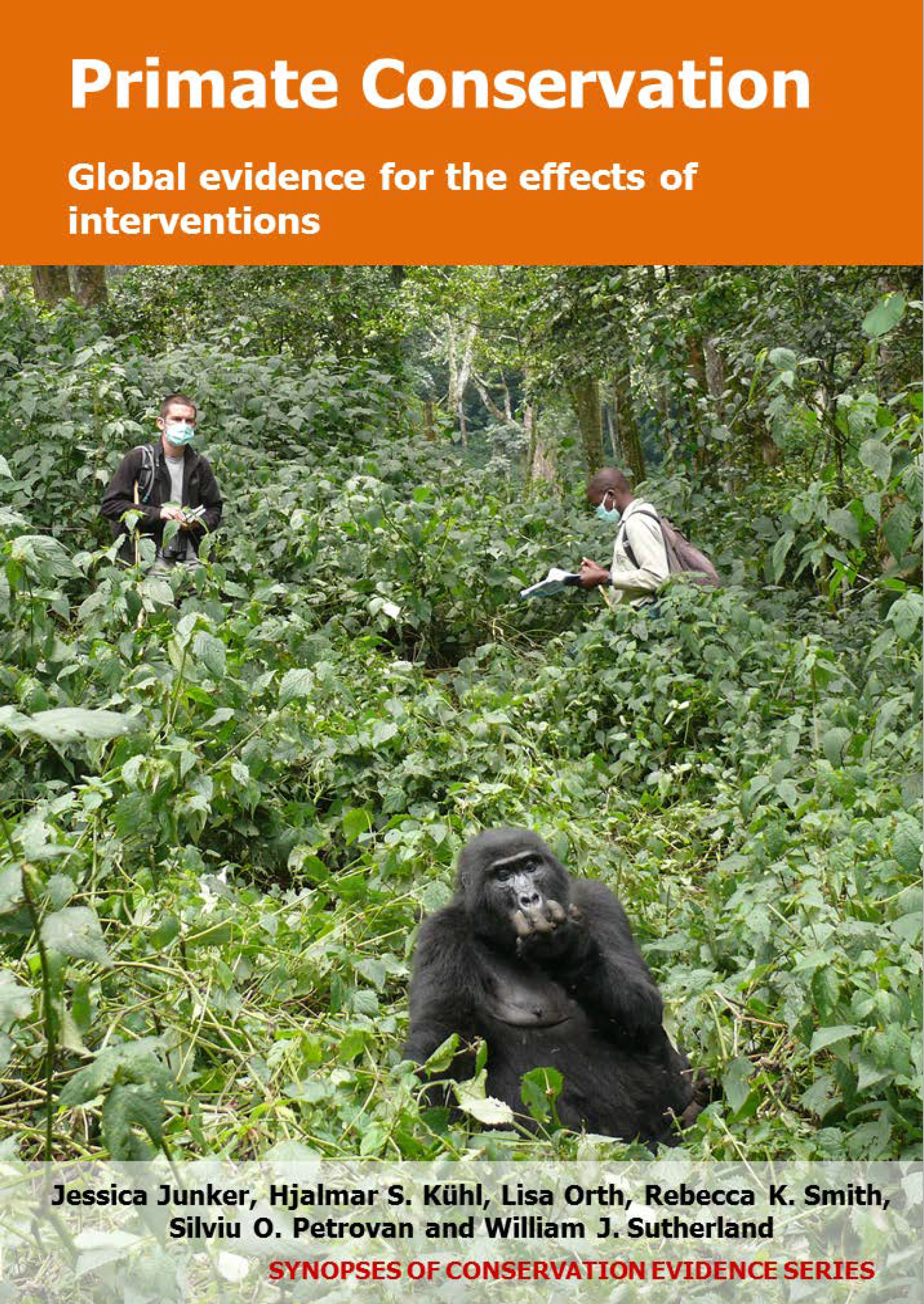Wear face-masks to avoid transmission of viral and bacterial diseases to primates
-
Overall effectiveness category Unknown effectiveness (limited evidence)
-
Number of studies: 2
View assessment score
Hide assessment score
How is the evidence assessed?
-
Effectiveness
50% -
Certainty
5% -
Harms
0%
Study locations
Supporting evidence from individual studies
A study in 2009 in savanna-woodland mosaic in Niokolo-Koba National Park, Senegal found that a confiscated 9-months old female infant chimpanzee Pan troglodytes verus that was handled by caretakers wearing face-masks along with other interventions, was reunited with its mother in the wild. Four days after confiscation, the chimpanzee was released in the vicinity of its natal group, which retrieved it immediately. The author wore a surgical mask and sanitized her hands when handling the infant and its food to prevent disease transmission. The infant’s natal group was located with the aid of poachers, after which it was released close to the group. The infant was also treated for its injured eye. The study does not distinguish between the effects of the different interventions mentioned above.
Study and other actions testedA controlled, before-and-after study in 1967-2008 in tropical moist montane forest in Volcanoes-, Mgahinga-, and Virunga National Parks in Rwanda, Uganda, and the Democratic Republic of Congo found that the mountain gorilla Gorilla beringei beringei population that was regularly visited by tourists and researchers that wore face-masks to avoid disease transmission along with ten other interventions, increased in size over time. Annual population growth was 4.1%, resulting in an overall population increase of 168% over 41 years. No statistical tests were carried out to determine whether this increase was significant. All visitors/researchers were recommended to wear N95 masks (when available) or a surgical mask when visiting the gorillas. Gorillas were habituated to human presence as part of the ecotourism and research programmes and visitors/researchers had to follow strict health procedures; these included keeping a safety distance to the gorillas, spending only a limited amount of time with gorilla groups, ensuring that visitors/researchers were healthy, and disinfecting visitor’s/researcher’s clothes, boots etc. In addition, the population was continuously monitored by vets and gorillas received medical treatment if necessary. When gorillas died, their cause of death was clinically determined. The study does not distinguish between the effects of the different interventions mentioned above.
Study and other actions tested
Where has this evidence come from?
List of journals searched by synopsis
All the journals searched for all synopses
This Action forms part of the Action Synopsis:
Primate Conservation
Primate Conservation - Published 2017
Primate Synopsis





)_2023.JPG)














